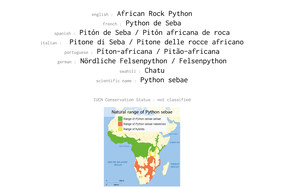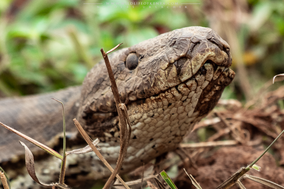- Homepage
- Bestiary
- Carnivores
- Pachydermata
- Birds of prey
- Bateleur
- Buzzard, Augur
- Buzzard, Common
- Eagle, African Crowned
- Eagle, African Fish
- Eagle, Black-chested Snake
- Eagle, Brown Snake
- Eagle, Long-crested
- Eagle, Martial
- Eagle, Steppe
- Eagle, Tawny
- Eagle, Wahlberg's
- Falcon, Amur
- Falcon, Lanner
- Falcon, Pygmy
- Goshawk, African
- Goshawk, Dark Chanting
- Goshawk, Eastern Chanting
- Goshawk, Gabar
- Harrier, African Marsh
- Harrier, Eurasian Marsh
- Harrier, Montagu's
- Harrier, Pallid
- Hawk, African Harrier
- Hobby, eurasian
- Kestrel, Common
- Kestrel, Grey
- Kestrel, Greater
- Kestrel, Lesser
- Kite, Yellow-billed
- Kite, Black-winged
- Eagle-owl, Verreaux's
- Owl, african scops
- Owl, Marsh
- Secretary Bird
- Sparrowhawk
- Vulture, Egyptian
- Vulture, Hooded
- Vulture, Lappet-faced
- Vulture, Palm-nut
- Vulture, Rüppell's
- Vulture, White-backed
- Vulture, White-headed
- Ongulates
- Antelope, sable
- Bongo
- Buffalo
- Bushbuck
- Bushpig
- Dik-dik, Kirk's
- Dik-dik, Günther's
- Duiker, common
- Duiker, Harvey's
- Eland
- Gazelle, Grant
- Gazelle, Thomson
- Gerenuk
- Giraffe, masai
- Giraffe, reticulated
- Giraffe, Rotschild's
- Hartebeest
- Hog, giant forest
- Impala
- Klipspringer
- Kudu, greater
- Kudu, lesser
- Oribi
- Oryx, east african
- Oryx, fringe-eared
- Reedbuck, Bohor
- Reedbuck, mountain
- Steenbok
- Suni
- Topi
- Warthog
- Waterbuck, common
- Waterbuck, defassa
- Wildebeest
- Zebra, Grevy
- Zebra, hybrid
- Zebra, plain
- Reptiles
- Waders and water birds
- Avocet pied
- Bittern, dwarf
- Coot
- Cormorant, long-tailed
- Cormorant, white-breasted
- Courser, Bronze-winged
- Courser, somali
- Courser, Temminck's
- Courser, three-banded
- Courser, Two Banded
- Crake black
- Crane, grey crowned
- Darter, african
- Duck, african black
- Duck, knob-billed
- Duck, white-backed
- Duck, white-faced whistling
- Duck, yellow-billed
- Egret, cattle
- Egret, great
- Egret, intermediate
- Egret, little
- Flamingo, greater
- Flamingo, lesser
- Goose, egyptian
- Goose, spur-winged
- Grebe, little
- Greenshank, common
- Gull, grey-headed
- Gull, sooty
- Hamerkop
- Heron, black
- Heron, black-headed
- Heron, goliath
- Heron, grey
- Heron, purple
- Heron, rufous-bellied
- Heron, squacco
- Heron, striated
- Night-heron, black-crowned
- Ibis, african sacred
- Ibis, glossy
- Ibis, hadada
- Jacana, African
- Lapwing, Senegal
- Moorhen, common
- Painted-snipe, greater
- Pelican, great white
- Pelican, pink-backed
- Plover, blacksmith
- Plover, black-winged
- Plover, caspian
- Plover, crowned
- Plover, kittlitz's
- Plover, long-toed
- Plover, ringed
- Plover, spur-winged
- Plover, three-banded
- Plover, wattled
- Pratincole, collared
- Ruff
- Sandpiper, common
- Sandpiper, green
- Sandpiper, marsh
- Sandpiper, wood
- Sandplover, greater
- Snipe, common
- Spoonbill
- Stilt
- Stint, little
- Stork, abdim's
- Stork, african openbill
- Stork, black
- Stork, marabou
- Stork, saddle-billed
- Stork, white
- Stork, woolly-necked
- Stork, yellow-billed
- Teal, common
- Teal, Hottentot
- Teal, red-billed
- Teal cape
- Tern, white-winged
- Tern, whiskered
- Thick-knee, spotted
- Thick-knee, water
- Terrestrial birds
- Bustard, black-bellied
- Bustard, buff-crested
- Bustard, Hartlaub's
- Bustard, kori
- Bustard, white-bellied
- Francoli, coqui
- Francolin, crested
- Francolin, Hildebrandt's
- Francolin, Jackson's
- Francolin, red-winged
- Francolin, Shelley's
- Guineafowl, helmeted
- Guineafow, vulturine
- Hornbill, southern ground
- Ostrich, masai
- Ostrich, somali
- Sandgrouse, black-faced
- Sandgrouse, chesnut-bellied
- Sandgrouse, yellow-throated
- Spurfowl, red-necked
- Spurfowl, yellow-necked
- Birds
- Apalis, yellow-breasted
- Babbler, arrow-marked
- Babbler, brown
- Babbler, northern pied
- Barbet, d'Arnaud's
- Barbet, red-and-yellow
- Barbet, red-fronted
- Batis chin-spot
- Bee-eater, blue-cheeked
- Bee-eater, little
- Bee-eater, cinnamon-chested
- Bee-eater, eurasian
- Bee-eater, olive
- Bee-eater, somali
- Bee-eater, white-throated
- Bee-eater, white-fronted
- Bishop, yellow
- Bishop, Zanzibar red
- Bishop, yellow-crowned
- Boubou, tropical
- Boubou, slate-coloured
- Bulbul
- Bush-shrike, sulphur-breasted
- Bunting, cinnamon-breasted rock
- Bush-shrike, rosy-patched
- Camaroptera, grey-backed
- Canary, brimstone
- Canary, yellow-crowned
- Chat, alpine
- Chat, anteater
- Chat, cliff
- Chat, sooty
- Chatterer
- Cisticola, Aberdare
- Cisticola, desert
- Cisticola, Hunter's
- Cisticola Lyne's
- Cisticola, rattling
- Cisticola, stout
- Cisticola, winding
- Citril, african
- Cordon-bleu
- Coucal, white-browed
- Coucal, black
- Crow, house
- Crow, pied
- Cuckoo, african
- Cuckoo, african emerald
- Cuckoo, common
- Cuckoo, Diederik
- Cuckoo, great spotted
- Cuckoo, red-chested
- Dove, african mourning
- Dove, dusky turtle
- Dove, emerald-spotted wood
- Dove, namaqua
- Dove, laughing
- Dove, red-eyed
- Dove, ring-necked
- Drongo, fork-tailed
- Firefinch
- Fiscal, northern
- Fiscal, grey-backed
- Fiscal, long-tailed
- Fiscal, Taita
- Flycatcher, african dusky
- Flycatcher, african grey
- Flycatcher, african paradise
- Flycatcher, spotted
- Flycatcher, southern black
- Flycatcher, white-eyed slaty
- Go-away-bird
- Grenadier, purple
- Hoopoe
- Hoopoe, green wood
- Hornbill, african grey
- Hornbill, Jackson's
- Hornbill, Von Der Decken's
- Hornbill, red-billed
- Hornbill, eastern yellow-billed
- Hornbill, sylvery-cheeked
- Hornbill, crowned
- Indigobird, village
- Kingfisher, grey-headed
- Kingfisher, giant
- Kingfisher, malachite
- Kingfisher, pied
- Kingfisher, striped
- Kingfisher, woodland
- Lark, pink-breasted
- Lark, red-capped
- Lark, rufous-naped
- Longclaw, pangani
- Longclaw, rosy-breasted
- Longclaw, yellow-throated
- Lovebird
- Mannikin, bronze
- Mannikin, rufous-backed
- Mousebird, blue-naped
- Mousebird, speckled
- Mousebird, white-headed
- Oriole, black-headed
- Oriole, african golden
- Oxpecker, yellow-billed
- Oxpecker, red-billed
- Parrot, brown
- Parrot, red-bellied
- Pigeon, african green
- Pigeon, speckled
- Pipit, grassland
- Pipit, plain-backed
- Pipit, golden
- Quail-finch
- Quelea red-billed
- Raven, white-necked
- Raven, fan-tailed
- Robin-chat, Cape
- Robin-chat, white-browed
- Roller, eurasian
- Roller, lilac-breasted
- Roller, purple
- Rook, Cape
- Scimitarbill
- Scimitarbill, Abyssinian
- Scrub Robin, white-browed
- Seedeater, streaky
- Seedeater, yellow-rumped
- Shrike, lesser grey
- Shrike, red-backed
- Shrike, northern white-crowned
- Shrike, Isabelline
- Silverbird
- Sparrow, chesnut
- Sparrow, grey-headed
- Sparrow, rufous
- Sparrow, yellow-spotted bush
- Sparrow-Lark Fischer's
- Sparrow-weaver, Donaldson-Smith's
- Sparrow weaver, white-browded
- Starling, black-bellied
- Starling, bristle-crowned
- Starling, Fischer's
- Starling, Golden-breasted
- Starling, greater blue-eared
- Starling Hildebrandt's
- Starling, red-winged
- Starling, Rüppell's
- Starling, slender-billed
- Starling, superb
- Starling, violet-backed
- Starling, wattled
- Sunbird, amethyst
- Sunbird, beautiful
- Sunbird, bronze
- Sunbird, eastern double-collared
- Sunbird, golden-winged
- Sunbird, Hunter's
- Sunbird, malachite
- Sunbird, mariqua
- Sunbird, eastern violet-backed
- Sunbird, purple-banded
- Sunbird, scarlet-chested
- Sunbird, scarlet-tufted malachite
- Sunbird, tacazze
- Sunbird, variable
- Swallow, barn
- Swallow, red-rumped
- Swallow, lesser striped
- Swallow, wire-tailed
- Tchagra, black-crowned
- Tchagra, brown-crowned
- Thrush, abyssinian
- Thrush, common rock
- Thrush, spotted morning
- Tit, red-throated
- Tit, white-bellied
- Wagtail, african pied
- Wagtail, western yellow
- Warbler, grey-capped
- Warbler, moustached grass
- Warbler, willow
- Waxbill, common
- Weaver, african golden
- Weaver, Baglafecht
- Weaver, black-capped social
- Weaver, chesnut
- Weaver, grey-capped social
- Weaver, grosbeak
- Weaver, Holub's golden
- Weaver, northern masked
- Weaver, parasitic
- Weaver, red-billed
- Weaver, red-headed
- Weaver, spectacled
- Weaver, speckle-fronted
- Weaver, Speke's
- Weaver, Taveta golden
- Weaver, village
- Weaver, vitelline masked
- Weaver, white-headed buffalo
- Wheatear, abyssinian black
- Wheatear, capped
- Wheatear, isabelline
- Wheatear, northern
- Whinchat
- Whydah, paradise
- Whydah, pin-tailed
- Widowbird, Jackson's
- Widowbird, red-cowled
- Widowbird, white-winged
- Widowbird, yellow-mantled
- Woodpecker, grey
- Wodpecker, nubian
- Wren-Warbler , Grey
- Primates, Rodents and Others
- Baboon, olive
- Baboon, yellow
- Colobus, angolan
- Colobus, guereza
- Galago, greater
- Hare
- Hyrax, rock
- Hyrax, bush
- Mongoose, banded
- Mongoose, dwarf
- Mongoose, slender
- Mongoose, white-tailed
- Mole rat, naked
- Monkey, blue
- Monkey, patas
- Monkey, vervet
- Porcupine
- Rat, afroalpine vlei
- Squirrel, unstripped ground
- Squirrel, ochre bush
- Squirrel, red bush
- Chiromantis petersii
- B&W Gallery
- Buy prints
- Contact
African Rock Python
The African rock python (Python sebae) is a species of large constrictor snake in the family Pythonidae. The species is native to sub-Saharan Africa. It is one of 11 living species in the genus Python. It has two subspecies. One subspecies is found in Central and Western Africa, and the other subspecies is found in Southern Africa.
Africa's largest snake and one of the six largest snake species in the world (along with the green anaconda, reticulated python, Burmese python, Indian python, and amethystine python), specimens may approach or exceed 6 m (20 ft). The southern subspecies is generally smaller than its northern relative. The snake is found in a variety of habitats, from forests to near deserts, although usually near sources of water. The snake becomes dormant during the dry season. The African rock python kills its prey by constriction and often eats animals up to the size of antelope, occasionally even crocodiles. The snake reproduces by egg-laying. Unlike most snakes, the female protects her nest and sometimes even her hatchlings.
The snake is widely feared, though it very rarely kills humans. Although the snake is not endangered, it does face threats from habitat reduction and hunting.
Africa's largest snake species and one of the world's largest, the typical African rock python adult measures 3 to 3.53 m in total length, with only unusually large specimens likely to exceed 4.8 m. Reports of specimens over 6 m are considered reliable, although larger specimens have never been confirmed. Weights are reportedly in the range of 44 to 55 kg, per one study adults are expected to weigh only up to 32.2 kg. Exceptionally large specimens may weigh 91 kg or more.
Like all pythons, the African rock python is non-venomous and kills by constriction. After gripping the prey, the snake coils around it, tightening its coils every time the victim breathes out. Death is thought to be caused by cardiac arrest rather than by asphyxiation or crushing.
People are often fearful of large pythons and may kill them on sight. The African rock python may also be threatened by hunting for leather in some areas. The African rock python is still relatively common in many regions across Africa, and may adapt to disturbed habitats, provided that food is available. It is not currently considered at risk of extinction, but is listed on Appendix II of the Convention on International Trade in Endangered Species, meaning international trade in African rock pythons should be carefully monitored and controlled, giving wild populations some protection from overcollection for pets and skins.
Luo people of Kenya living mainly in the area near Lake Victoria generally consider snakes to be evil and believe that sorcerers make them harm people. Towards pythons, they express different attitude - such as making them appear in play songs and even worshiping. The Luo call the African rock python ng'ielo in their language, and with the songs containing a phrase ng'ielo jadhogre “python the coiling”, children make a line and imitate a python's motion. The Luo call every gentle python, which appears almost decade by decade, Omieri (or Omweri) and worship her, regarding her as a reincarnation of a woman and linked with rain and fertility.
Source : Wikipedia







